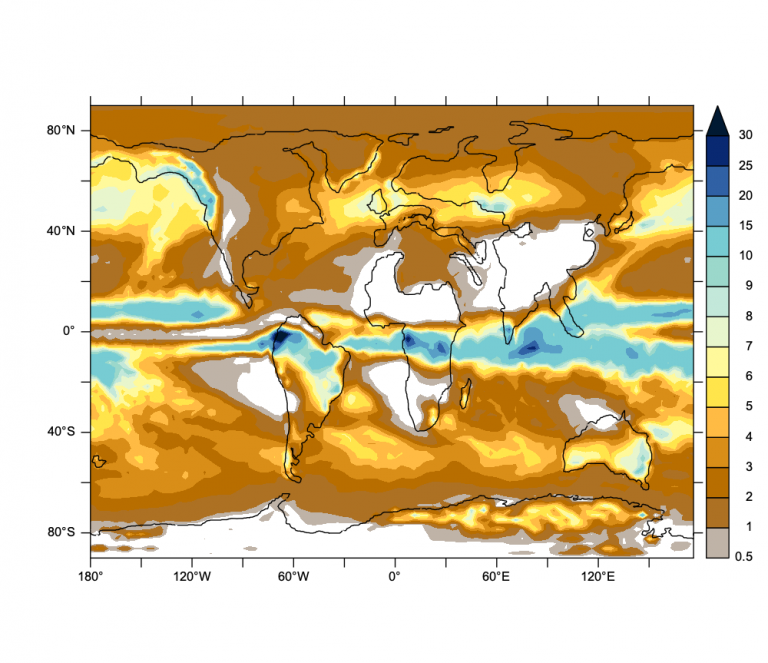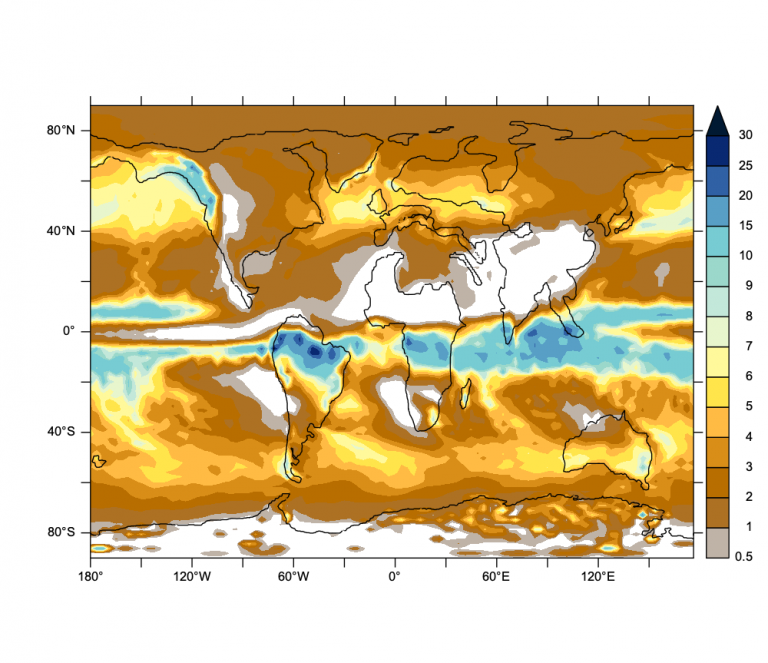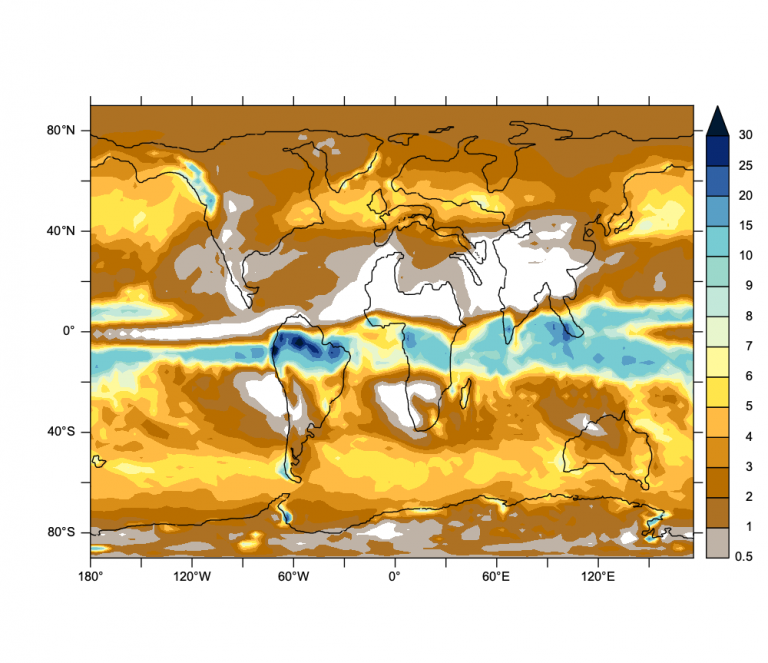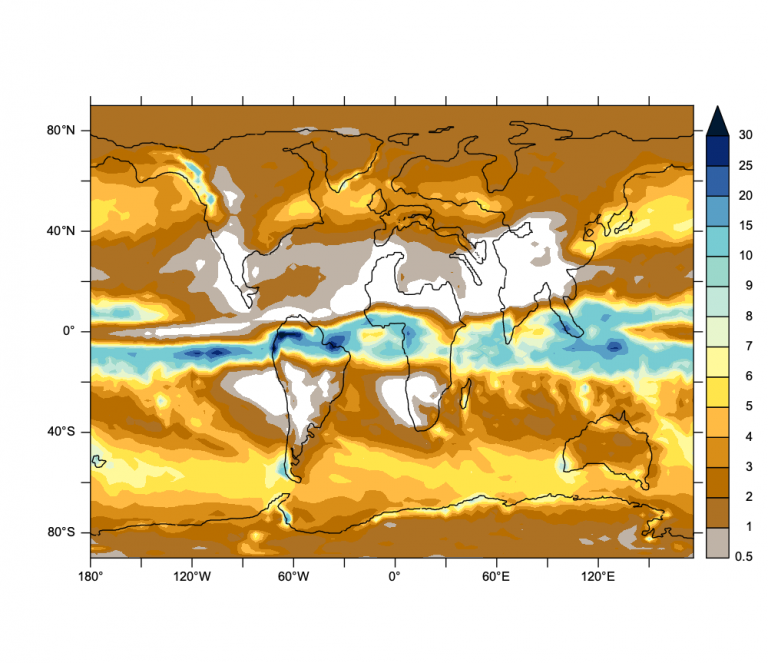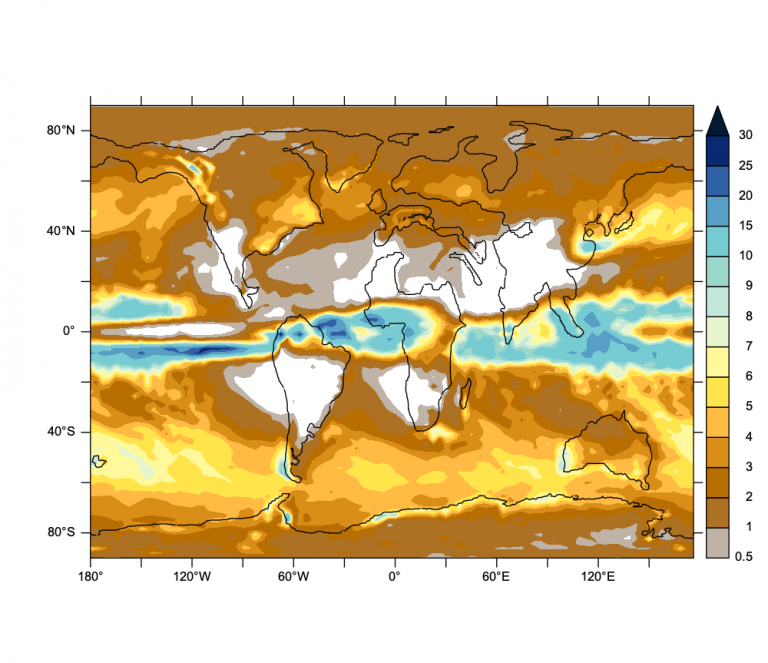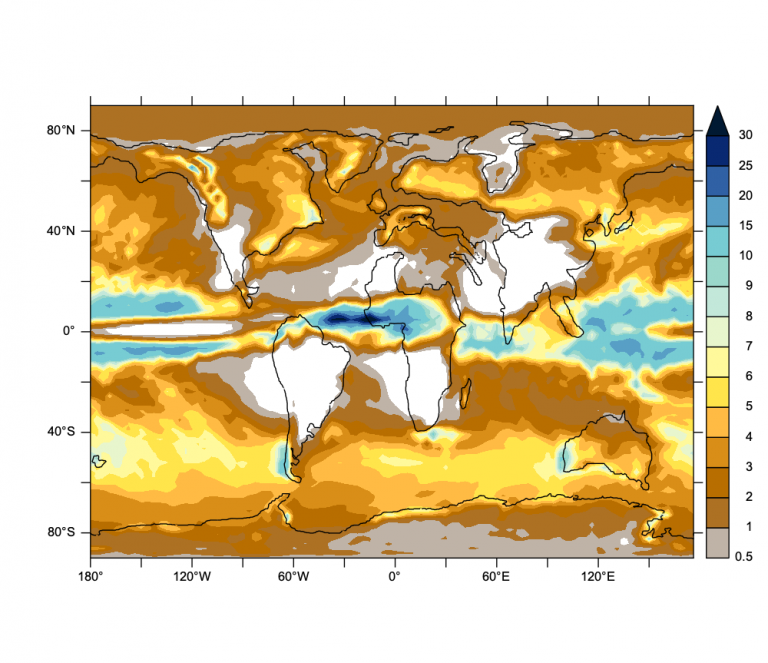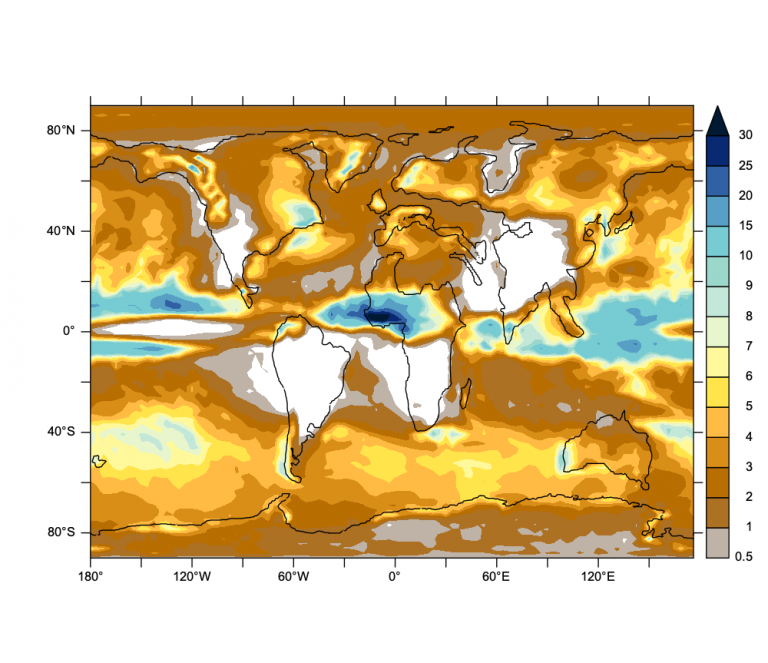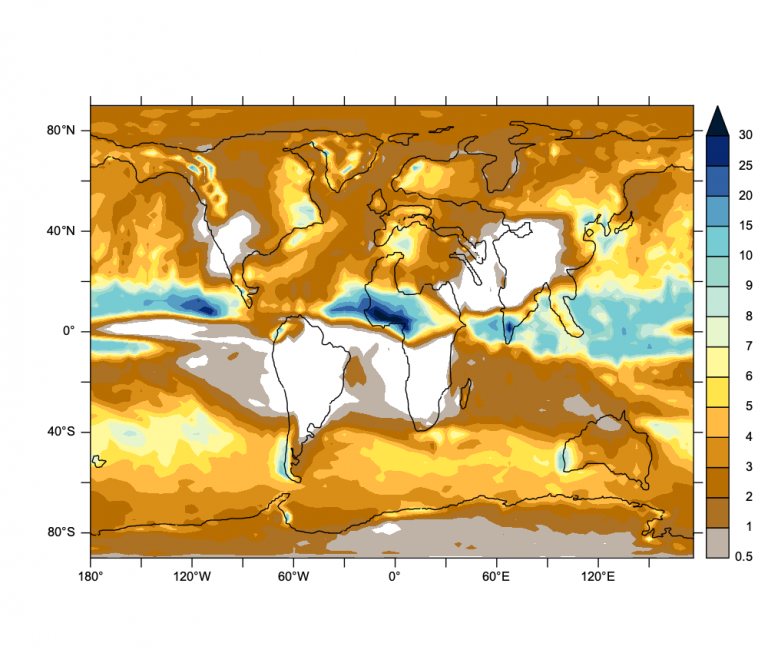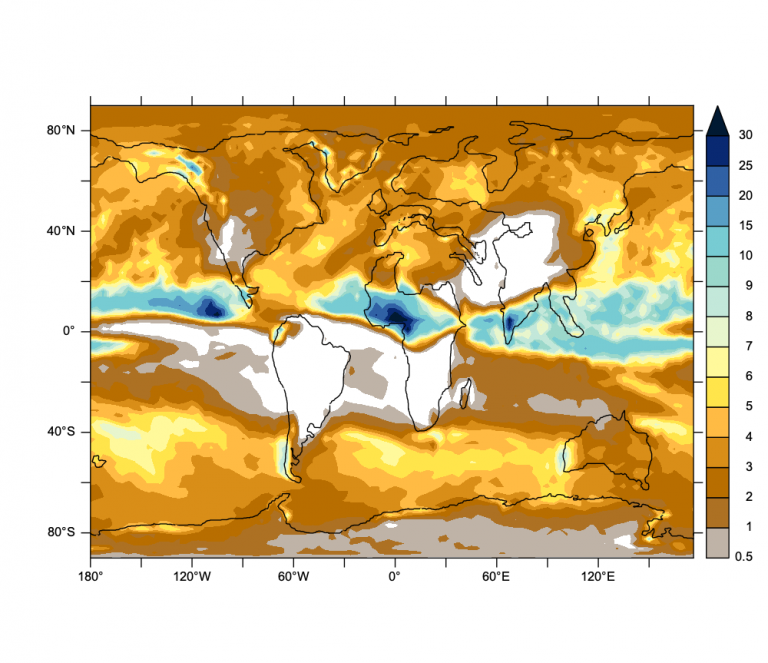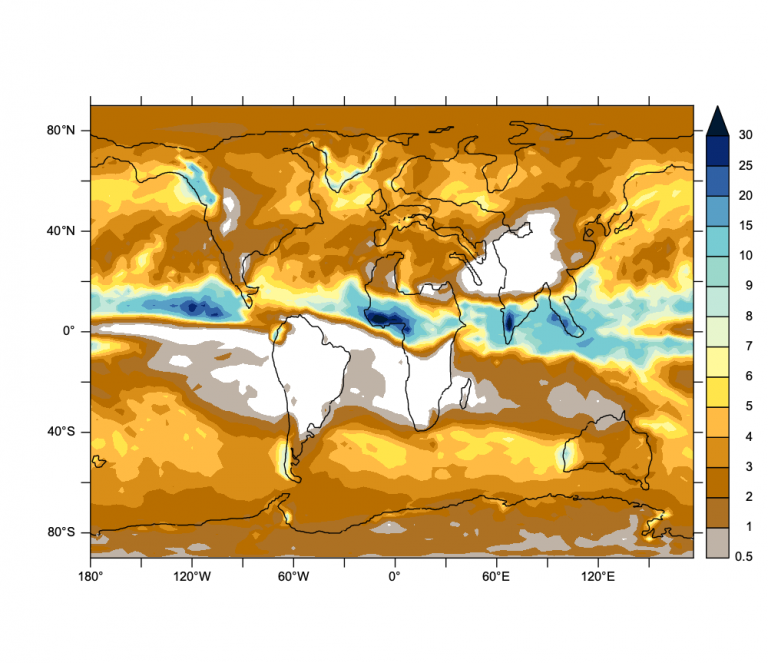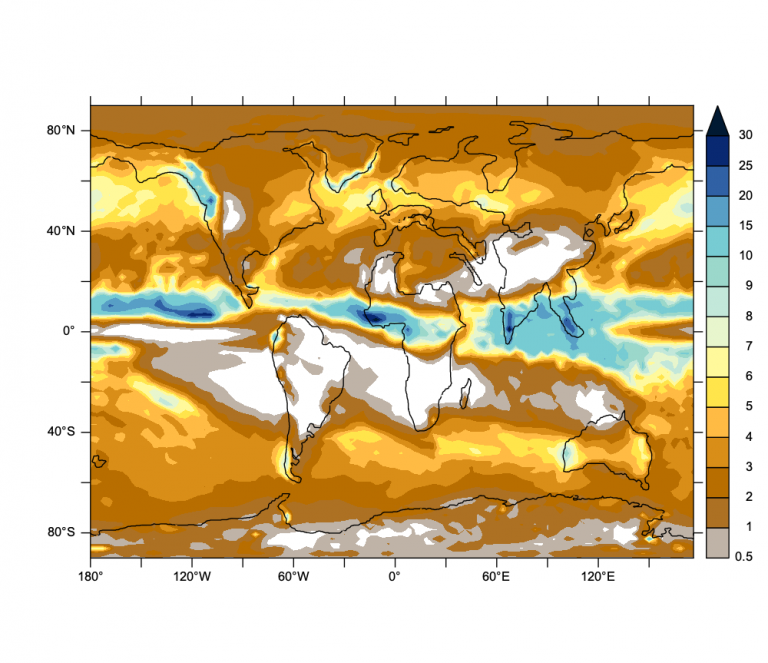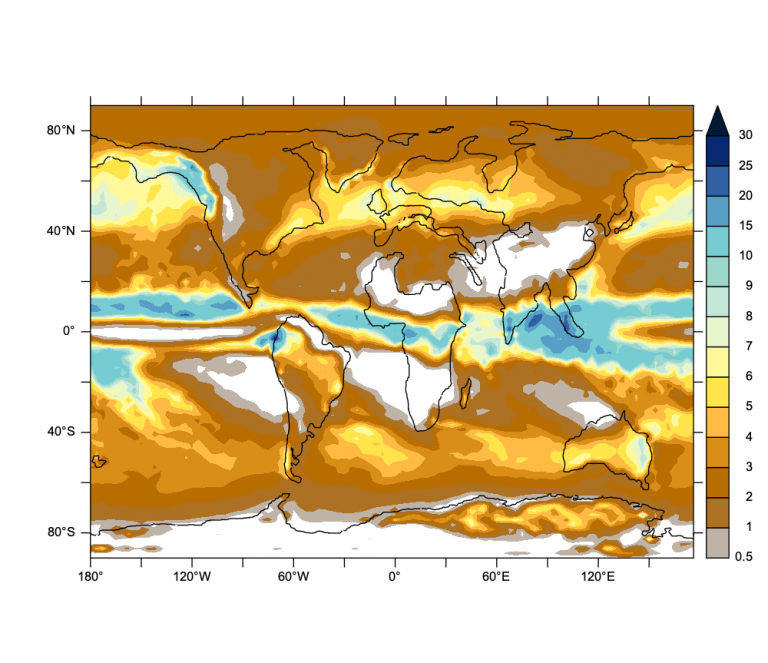Climate modeling
Over geological time, major climate changes have marked the history of the Earth. Paleoclimate markers record the evidence of these changes but the causes may be multiple and feedback mechanisms may intervene. In a system where the solid (lithosphere) and fluid (atmosphere, ocean) envelopes are closely linked, understanding the evolution of the Earth’s climates on a geological time scale implies knowing the evolution of paleogeography over time. Indeed, the displacement of the lithospheric plates, the vertical movements of the lithosphere (isostatic or dynamic) and the marine eustatism modify the face of the Earth. Thus, periods of continental coalescence leading to a supercontinent alternate with periods of continental dislocation, orogenic phases alternate with phases of landform peneplanation, periods of marine regression alternate with periods of maximum continental flooding.
These paleogeographic changes act directly on the climate by modifying the solar radiation received locally and by disturbing the atmospheric and/or oceanic circulation, and indirectly by disturbing the inorganic carbon cycle through variations in sources (volcanism, metamorphism) and sinks (silicate alteration) or in organic carbon (burial of organic matter). These perturbations of the organic and inorganic carbon cycle act directly on the intensity of the greenhouse effect. Other gases such as methane are also likely to vary.
On a shorter time scale (104-105 years), variations in the Earth’s orbital parameters (eccentricity, obliquity, precession of the equinoxes) modulate the solar radiation received at each point of the globe during the year. This results in cyclical variations of the climate over time.
Modeling is a perfect tool to help understand the causes and mechanisms behind climate change and biogeochemical cycles. However, as the different earth envelopes have extremely variable characteristic response times (a few days for the atmosphere, a few decades to centuries for the ocean, more than a million years for tectonics), the main difficulty lies in integrating processes operating on different time scales. To overcome this major difficulty, it is therefore necessary to use a hierarchy of complementary numerical models adapted to the problem and to couple them. The simulations thus carried out are confronted with a wide range of paleoclimatic and paleoenvironmental indicators.
Earth System model
Our studies are based on the Earth System model IPSL-CM5A2. It consists of an atmospheric model, an ocean and sea ice model, a land surface model to simulate soils, vegetation and water routing, and a biogeochemical cycles model. This model is optimized to perform simulations of several thousand years, the time required to bring the deep ocean to equilibrium.
